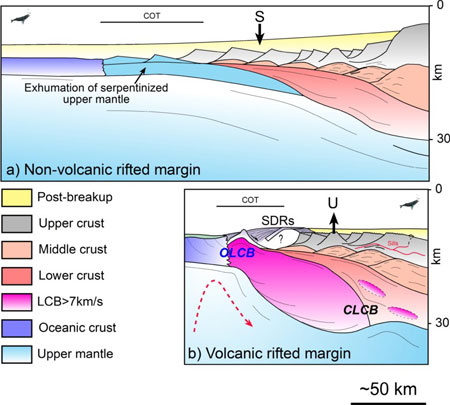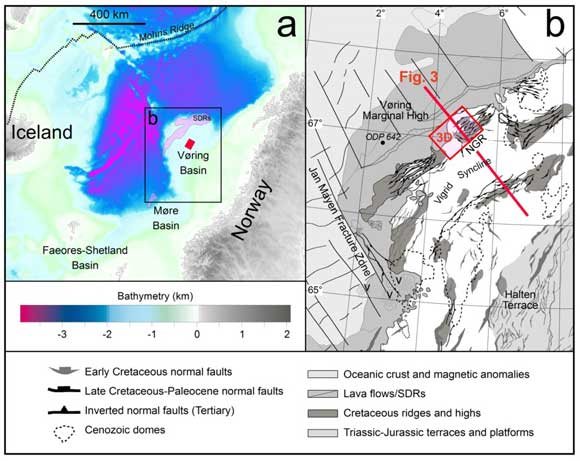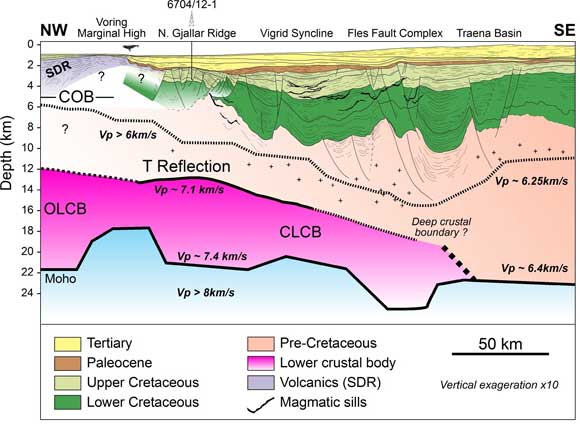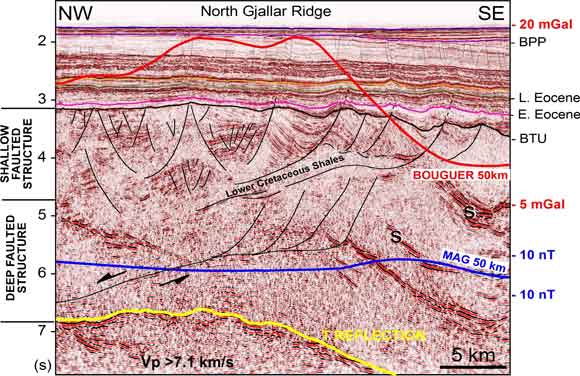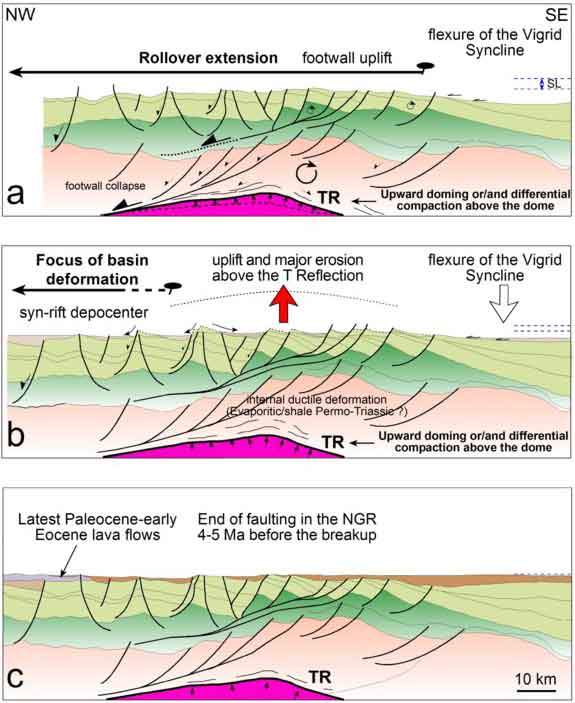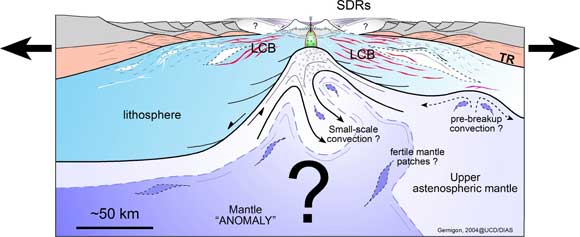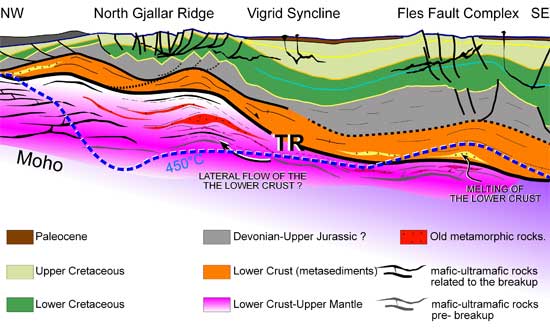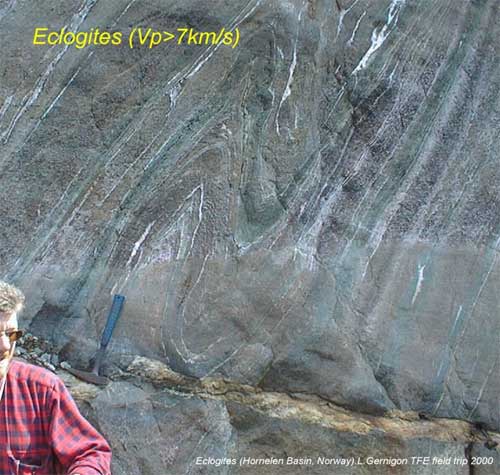
The erratic course of the Delaware River is the only natural boundary of Pennsylvania. All others are arbitrary boundaries that do not conform to physical features. Notable contrasts in topography, climate, and soils exist. Within this 45,126-square-mile area lies a great variety of physical land forms of which the most notable is the Appalachian Mountain system composed of two ranges, the Blue Ridge and the Allegheny. These mountains divide the Commonwealth into three major topographical sections. In addition, two plain areas of relatively small size also exist, one in the southeast and the other in the northwest.
In the extreme southeast is the Coastal Plain situated along the Delaware River and covering an area 50 miles long and 10 miles wide. The land is low, flat, and poorly drained, but has been improved for industrial and commercial use because of its proximity to ocean transportation via the Delaware River. Philadelphia lies almost in the center of this area.
Bordering the Coastal Plain and extending 60 to 80 miles northwest to the Blue Ridge is the Piedmont Plateau, with elevations ranging from 100 to 500 feet and including rolling or undulating uplands, low hills, fertile valleys, and well-drained soils. These features, combined with the prevailing climate, have aided this area in becoming the leading agricultural section of the state.
Good pastures, productive land, and short distances to markets have resulted in dairy farming becoming one of the leading agricultural activities. Another activity is the growing of fruit, primarily apples an peaches. Gentle hillside slopes provide an excellent place for fruit trees, as cold air drainage helps to prevent unseasonable freezing temperatures on these slightly elevated lands.
The area has many orchards, with Adams County leading all others within the region in the production of apples. The climate and soils in the Lancaster County area are especially well suited for the growing of cigar leaf tobacco, as is pointed up by the fact that Pennsylvania is the leading producer of cigar leaf of any type in the nation. Just northwest of the Piedmont and between the Blue Ridge and Allegheny Mountains is the Ridge and Valley Region, in which forested ridges alternate with fertile and extensively farmed valleys. Vegetables, grown primarily for canning, are the leading crop.
This has led to a well-developed canning industry, which is concentrated in the middle Susquehanna Valley. The Ridge and Valley Province is 80 to 100 miles wide and characterized by parallel ridges and valleys oriented northeast-southwest. The mountain ridges vary from 1300 to 1600 feet above sea level, with local relief 600 to 700 feet. North and west of the Ridge and Valley Region and extending to the New York and Ohio borders is the area known as the Allegheny Plateau.
This is the largest natural division of the state an occupies more than half the area. It is crossed by many deep narrow valleys and drained by the Delaware, Susquehanna, Allegheny, and Monongahela River systems. Elevations are generally 1000 to 2000 feet above sea level; however, some mountain peaks extend to 3000 feet. The area is heavily wooded an among the must rugged in the state.
Numerous lakes and swamps characterize this once glaciated area, creating a very picturesque landscape; this is particularly outstanding in the more northerly counties. The combination of lakes and forests at elevations high enough to keep summer temperatures comfortable and its location close to heavily populated cities have made the Pocono Mountain area the leading tourist and recreational center in Pennsylvania.
Bordering Lake Erie is a narrow 40-mile strip of flat, rich land 3 to 4 miles wide called the Lake Erie Plain. Fine alluvial soils and favorable climate permit intensive vegetable and fruit cultivation, which is typical of the much larger area surrounding Lake Erie. Eastern and central Pennsylvania drains into the Atlantic Ocean, while the western portion of the state lies in the Ohio River Basin, except the Lake Erie Plain in the northwest, which is drained by a number of small streams into Lake Erie.
The Delaware River, which forms the eastern boundary, drains the eastern portion and flows into Delaware Bay. The Susquehanna River drains the central portion and flows into Chesapeake Bay. In the western portion, the Allegheny and the Monongahela Rivers have their confluence at Pittsburgh and form the Ohio River.
Floods may occur during any month of the year in Pennsylvania, although they occur with greater frequency in the spring months of March and April. They may result from heavy rains during any season. Generally, the most widespread flooding occurs during the winter and spring when associated with heavy rains, or heavy rains combined with snowmelt. Serious local flooding sometimes results from ice jams during the spring thaw. Heavy local thunderstorm rains cause severe flash flooding in many areas. Storms of tropical origin sometimes deposit flood-producing rains, especially in the eastern portion of the state.
Floods may be expected at least once in most years. For instance, flood stage at Pittsburgh is exceeded on the average of 1.3 times per year, based on the long-term record. However, floods of notable severity and magnitude for the state occur about once in 8 years. Some years in which major flooding occurred along principal rivers are as follows: Schuylkill, 1902, 1935, 1942, 1955, 1969, 1972, 1975, 1996; Delaware, 1903, 1936, 1955, 1967,1972, 1975, 1996; Susquehanna, 1865, 1889, 1894, 1902, 1904, 1936, 1964; 1972, 1975,1996; Allegheny, 1865, 1889, 1892, 1905, 1907, 1910, 1913, 1936, 1942, 1947, 1964, 1972, 1996; Monongahela, 1888, 1907, 1918, 1936, 1972, 1996; Ohio, 1907, 1936, 1942, 1954, 1972,1996.
Pennsylvania is generally considered to have a humid continental type of climate, but the varied physiographic features have a marked effect on the weather and climate of the various sections within the state. The prevailing westerly winds carry most of the weather disturbances that affect Pennsylvania from the interior of the continent, so that the Atlantic Ocean has only limited influence upon the climate of the state. Coastal storms do, at times, affect the day-to-day weather, especially in eastern sections. It is here that storms of tropical origin have the greatest effect within the state, causing floods in some instances.
Throughout the state temperatures generally remain between 0° and 100° and average from near 47°; annually in the north-central mountains to 57°; annually in the extreme southeast. The highest temperature of record in Pennsylvania of 111° was observed at Phoenixville on July 9 and 10, 1936, while the record low of -42° occurred at Smethport January 5, 1904.
Summers are generally warm, averaging about 68° along Lake Erie to 74° in southeastern counties. High temperatures, 90° or above, occur on the average of 10 to 20 days per year in most sections; but occasionally southeastern localities may experience a season with as many as 35 days, while the the extreme northwest averages as few as 3 days annually.
Only rarely does a summer pass without excessive temperatures being reported somewhere in the state. However, there are places such as immediately adjacent to Lake Erie and at some higher elevations where readings of 100° have never been recorded. Daily temperatures during the warm season usually have a range of about 20° over much of the state, while the daily range in the winter is several° less. During the coldest months temperatures average near the freezing point with daily minimum readings sometimes near 0° or below.
Freezing temperatures occur on the average of 100 or more days annually with the greatest number of occurrences in mountainous regions. Records show that freezing temperatures have occurred somewhere in the state during all months of the year and below 0° readings from November to April, inclusive. Precipitation is fairly evenly distributed throughout the year. Annual amounts generally range between 34 to 52 inches, while the majority of places receive 38 to 46 inches.
Greatest amounts usually occur in the spring and summer months, while February is the driest month, having about 2 inches less than the wettest months. Precipitation tends to be somewhat greater in eastern sections due primarily to coastal storms which occasionally frequent the area. During the warm season these storms bring heavy rain, while in winter heavy snow or a mixture of rain and snow may be produces.
Thunderstorms, which average between 30 to 35 per year, are concentrated in the warm months and are responsible for most of the summertime rainfall, which averages from 11 inches in the northwest to 13 inches in the east. Occasionally dry spells may develop and persist for several months during which time monthly precipitation may total less than one-quarter inch. These periods almost never affect all sections of the state at the same time, nor are they confined to any particular season of the year. Winter precipitation is usually 3 to 4 inches less than summer rainfall and is produced most frequently from northeastward-moving storms.
When temperatures are low enough these storms sometimes cause heavy snow which may accumulate to 20 inches or more. Annual snowfall ranges between wide limits from year to year and place to place. Some years are quite lean as snowfall may total less than 10 inches while other years may produce upwards to 100 inches mostly in northern and mountainous areas. Annual snowfall averages from about 20 inches in the extreme southeast to 90 inches in parts of McKean County.
Measurable snow generally occurs between November 20 and March 15 although snow has been observed as early as the beginning of October and as late as May, especially in northern counties. Greatest monthly amounts usually fall in December and January, however, greatest amounts from individual storms generally occur in March as the moisture supply increases with the annual march of temperature.
As mentioned earlier, hurricanes or low pressure systems with a tropical origin seldom affect the state. Damages, as a result of hurricane winds, are rare and usually confined to extreme eastern portions. However, nature's most violent strom, the tornado, does occur in Pennsylvania. At least one tornado has been noted in almost all counties (all but three since 1954) since the advent of severe storms records in 1854.
On the average, 5 or 6 tornadoes are obseved annually in Pennsylvania, and the State ranks 27th nationally. June is the month of highest frequency, followed closely by July and August. Principal areas of tornado concentration are in the extreme northwest, the Southwest Plateau, and the Southeastern Piedmont.
The frequency in the latter area is the highest in the State per square mile, similar to what is observed in portions of Midwestern United States. Many of the tornadoes in Pennsylvania have caused relatively minor damages. However, several have claimed lives and dealt severe local economic setbacks.
The most destructive activity occurred on May 31,1985 when 27 tornadoes raked across the northern and western counties of the Commonwealth killing more than 60 people. On June 23, 1944, 3 tornadoes raked the southwestern portion of the Commonwealth, killing 45 persons, injuring another 362, and causing over $2 million in property damage.
The topographic features of Pennsylvania divide the State into four rather distinct climatic areas:
(1) The Southeastern Coastal Plain and Piedmont Plateau
(2) The Ridge and Valley Province
(3) The Allegheny Plateau
(4) The Lake Erie Plain.
In the Southeastern Coastal Plain and Piedmont Plateau summers are long and at times uncomfortably hot. Daily temperatures reach 90° or above on the average of 25 days during the summer season; however, readings of 100° or above are comparatively rare. From about July 1 to the middle of September this area occasionally experiences uncomfortably warm periods, 4 to 5 days a week in length, during which light wind movement and high relative humidity make conditions oppressive.
In general, the winters are comparatively mild, with an average of less than 100 days with minimum temperatures below the freezing point. Temperatures 0° or lower occur at Philadelphia, on average, 1 winter in 4, and at Harrisburg 1 in 3. The freeze-free season averages 170 to 200 days.
Average annual precipitation in the area ranges from about 30 inches in the lower Susquehanna Valley to about 46 in Chester County. Under the influence of an occasional severe coastal storm, a normal month's rainfall, or more, may occur within a period of 48 hours. The average seasonal snowfall is about 30 inches, and fields are ordinarily snow covered about one-third of the time during the winter season.
The Ridge and Valley Province is not rugged enough for a true mountain type of climate, but it does have many of the characteristics of such a climate. The mountain-and-valley influence on the air movements cause somewhat greater temperature extremes than are experienced in the southeastern part of the State where the modifying coastal and Chesapeake Bay influence hold them relatively constant, and the daily range of temperature increases somewhat under the valley influences.
The effects of nocturnal radiation in the valleys and the tendency for cool airmasses to flow down them at night result in a shortening of the growing season by causing freezes later in spring and earlier in fall than would otherwise occur. The growing (freeze-free) season in this section is longest in the middle Susquehanna Valley, where it averages about 165 days, and shortest in Schuylkill and Carbon Counties, averaging less than 130 days.
The annual precipitation in this area has a mean value of 3 or 4 inches more than in the southeastern part of the State, but its geographic distribution is less uniform. The mountain ridges are high enough to have some deflecting influence on general storm winds, while summer showers and thunderstorms are often shunted up the valleys.
Seasonal snowfall of the Ridge and Valley Province varies considerably within short distances. It is greatest in Somerset county, averaging 88 inches in the vicinity of Somerset, and least in Huntingdon, Mifflin, and Juniata Counties, averaging about 37 inches.
The Allegheny Plateau is fairly typical of a continental type of climate, with changeable temperatures and more frequent precipitation than other parts of the State. In the more northerly sections the influence of latitude, together with higher elevation and radiation conditions, serve to make this the coldest area in the State. Occasionally, winter minimum temperatures are severe. The daily temperature range is fairly large, averaging about 20° in midwinter and 26° in midsummer.
In the southern counties the daily temperature range is a few degrees higher and the same may be said of the normal annual range. Because of the rugged topography the freeze-free season is variable, ranging between 130 days in the north to 175 days in the south.
Annual precipitation has a mean of about 41 inches, ranging from less than 35 inches in the northern parts of Tioga and Bradford Counties to more than 45 inches in parts of Crawford, Warren, and Wayne Counties. The seasonal snowfall averages 54 inches in northern areas, while southern sections receive several inches less. Fields are normally snow covered three-fourths of the time during the winter season.
With rapidly flowing streams in the Ohio Drainage system (except the Monongahela), it is fortunate that this part of the State is not subject to torrential rains such as sometimes occur along the Atlantic slope. Although average annual precipitation is about equal to that for the State as a whole, it usually occurs in smaller amounts at more frequent intervals; 24-hour rains exceeding 2.5 inches are comparatively rare.
Although the Lake Erie Plain is of relatively small size, it has a unique and agriculturally advantageous climate typical of the coastal areas surrounding much of the Great Lakes. Both in spring and autumn the lake water exerts a retarding influence on the temperature regime and the freeze-free season is extended about 45 days. In the autumn this prevents early freezing temperatures, which is a critical factor in the growing of fruit and vegetables. Annual precipitation totals about 34.5 inches, which is fairly evenly distributed throughout the year. Snowfall exceeds 54 inches per year, with heavy snows sometimes experienced late in April












































